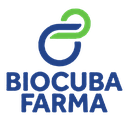Executive Secretary

VIII International Symposium on Chemistry and Pharmaceutical Sciences
SICF
VIII Symposium "Design, Obtaining and Development of Drugs"
Abstract
In this study, qualitative and quantitative chemometric models are developed to predict the inhibitory activity of the Polo-Like Kinase-1 enzyme as a therapeutic alternative for the treatment of cancer. This enzyme participates in the process of mitosis and is overexpressed in cancer cells, so it has great implications in tumor metastasis and their inhibitors are attractive starting points for drug development. The data was obtained from the ChEMBL from its SMILE code and optimized to achieve a stable three-dimensional conformation. The DRAGON molecular descriptors were used to characterize the studied molecules. First, a multiple linear regression model has been obtained whose performance is not good due to groupings of compounds with the same value of the experimental variable (pIC50). Afterward, the response variable was discretized with a piecewise regression and the breakpoint was established by the program to form two classes of compounds: active and inactive. Using the discrete variable, a linear discriminant analysis model with good global classification parameters was obtained, which was used for the virtual screening of compounds. Finally, seven flavonoids from several natural sources were identified as potential antitumor drug candidates.
Resumen
En este estudio se desarrollan modelos quimiométricos cualitativos y cuantitativos para predecir la actividad inhibidora de la enzima Polo-Like Kinasa-1 como alternativa terapéutica para el tratamiento del cáncer. Esta enzima participa en el proceso de mitosis y está sobreexpresada en células cancerosas, por lo que tiene grandes implicaciones en la metástasis tumoral y sus inhibidores son puntos de partida atractivos para el desarrollo de fármacos. Los datos fueron obtenidos del ChEMBL a partir de su código SMILE y optimizados para lograr una conformación tridimensional estable. Se utilizaron los descriptores moleculares del DRAGON para caracterizar las moléculas estudiadas. En primer lugar, se obtuvo un modelo de regresión lineal múltiple cuyo desempeño no es bueno debido a agrupaciones de compuestos con el mismo valor de la variable experimental (pIC50). Posteriormente, se discretizó la variable respuesta con una regresión por partes y el programa estableció el punto de corte para conformar dos clases de compuestos: activos e inactivos. Usando la variable discreta se obtuvo un modelo de análisis discriminante lineal con buenos parámetros de clasificación global, que se utilizó para el cribado virtual de compuestos. Finalmente, se identificaron siete flavonoides de varias fuentes naturales como posibles fármacos antitumorales.
About The Speaker

Dina Bárbara Aguado Herrera

Discussion




